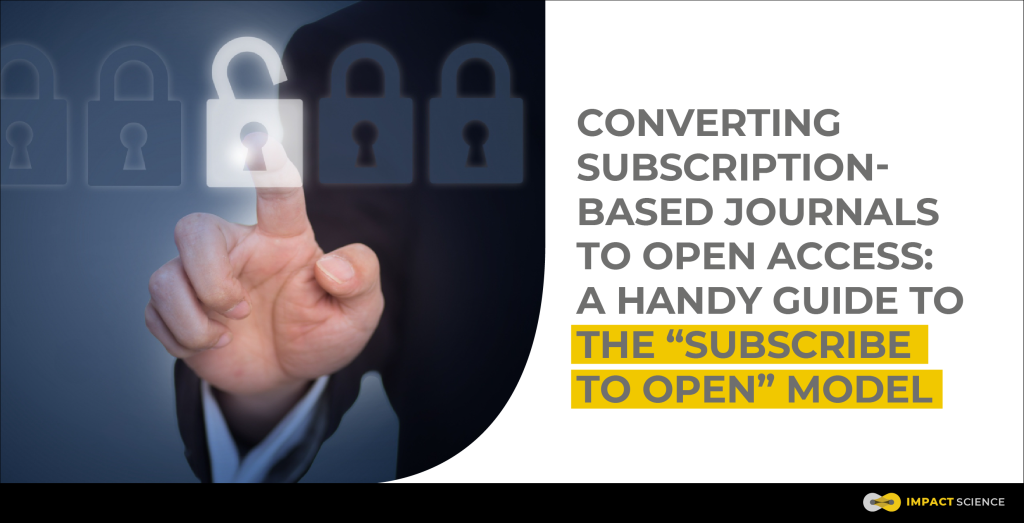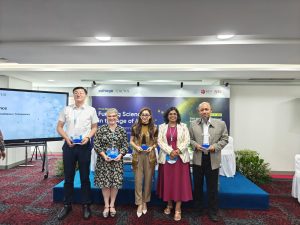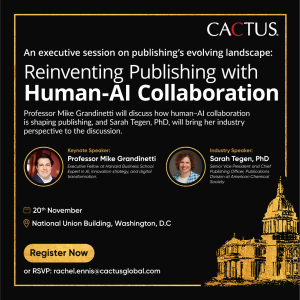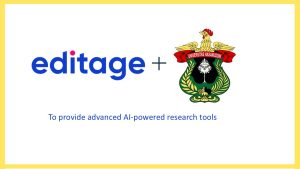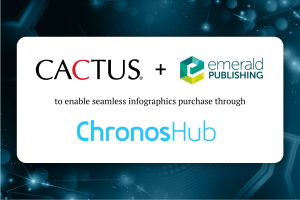As the shift toward open access publishing gains momentum, research publishers and societies have implemented various changes in how they manage their subscription-based journals. One of these, “Subscribe to Open” (S2O), is a pragmatic approach that enables the transformation of subscription journals into open access, providing free and immediate online availability of research without relying on either article processing charges or donations/grants. Various publishers and societies have adopted this model, such as the American Society for Microbiology and SAGE.
What is the S2O Model?
S2O offers a systematic and gradual shift from subscription-based models to open access. Publishers have the opportunity to convert journals one year at a time, ensuring a well-managed and sustainable transition. Using S2O, a publisher offers a journal’s current subscribers continued access. If all current subscribers agree to the S2O offer, the publisher makes the content covered by that year’s subscription open access. If a significant number of subscribers do not participate or delay their subscriptions, that year’s content does not become open access.
The offer is repeated every year; that is, each year’s content could become open access depending on whether sufficient subscribers participate. In some cases, publishers offer access to backfile content to encourage subscribers to opt for S2O.
See also: The Changing Role of Libraries in an Open Data World
The S2O Community of Practice
The S2O Community of Practice serves as a forum for publishers, librarians, funders, scholars, and other stakeholders to share experiences, collaborate, and work towards a consensus on S2O as a sustainable mechanism for delivering open access.
Coordinating Committee
The S2O Community relies on a dedicated Coordinating Committee, comprised of six volunteers committed to coordinating monthly meetings, managing the membership list, and facilitating communication among members.
See also: Unlocking the Potential of Open Access: A Publisher’s Roadmap for Advancing Global Health Research
Advantages of S2O
- Empowering Participation for Open Access: Central to S2O’s success is encouraging participation from current subscribers. By extending continued access to these subscribers, publishers can unlock the content covered by the annual subscription, making it freely accessible to readers.
- Flexibility and Inclusivity: In cases where full participation is not achieved initially, S2O persists in its mission. Publishers can repeat the offer annually, allowing more time for subscribers to embrace the open access approach.
- Alignment with Plan S: Plan S seeks to promote unrestricted access to research findings, aligning with the principles of open science. S2O complements these goals by providing publishers with a practical and gradual approach to make content openly accessible without the need for article processing charges.
- Encouraging Collaboration: The S2O Community of Practice fosters collaboration among publishers, librarians, funders, scholars, and other stakeholders. This collective effort helps in sharing best practices, building consensus, and advancing open access initiatives.
- Financial Stability for Publishers: Unlike some other open access models, S2O enables publishers to maintain their existing revenue streams by continuing subscriptions while simultaneously increasing access through open access. This approach offers financial stability during the transition to open access.
- Lower Author Burden and Enhanced Global Reach: By removing both article processing charges and paywalls, S2O ensures that researchers worldwide can both publish and access critical research, fostering a more diverse and impactful academic landscape.
See also: Making Research Both Available and Accessible: Going Beyond Open Access
Risks of S20
While S2O offers several benefits, it is essential to consider its potential disadvantages:
- Risk of Reduced Revenue: S2O relies on sufficient participation from current subscribers to unlock content. If a significant number of subscribers opt-out or delay renewals, publishers may face reduced revenue, potentially affecting the financial viability of the journal.
- Inequitable Access: While S2O aims to increase open access, it may not address the issue of affordability for institutions in lower-income regions. Some libraries, especially from resource-constrained areas, might still find it challenging to afford subscriptions, leading to inequitable access to scholarly content.
- Content Gating: If the participation threshold is not met in a given year, content for that period remains gated. This could create uncertainty for readers, although articles once published open access will still remain freely available.
- Complexity in Implementation: Transitioning from a subscription-based model to S2O requires careful planning and communication. Publishers might face challenges in coordinating with multiple institutions and subscribers, potentially leading to logistical complexities.
While S2O presents a viable path towards open access, these potential disadvantages need consideration and thoughtful management to ensure successful implementation and equitable access to scholarly information.
Conclusion
In conclusion, S2O presents an opportunity for publishers to unlock the potential of open access in scholarly publishing. With S2O as a pragmatic and sustainable solution, publishers can play a pivotal role in fostering open access and contributing to the broader vision of open science promoted by Plan S.


